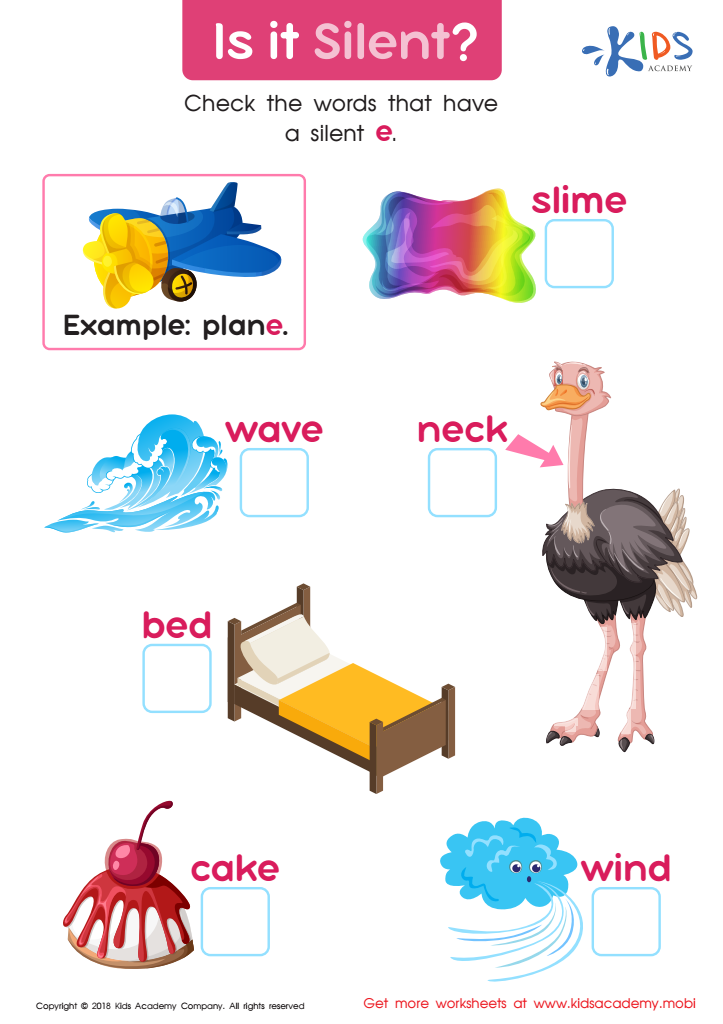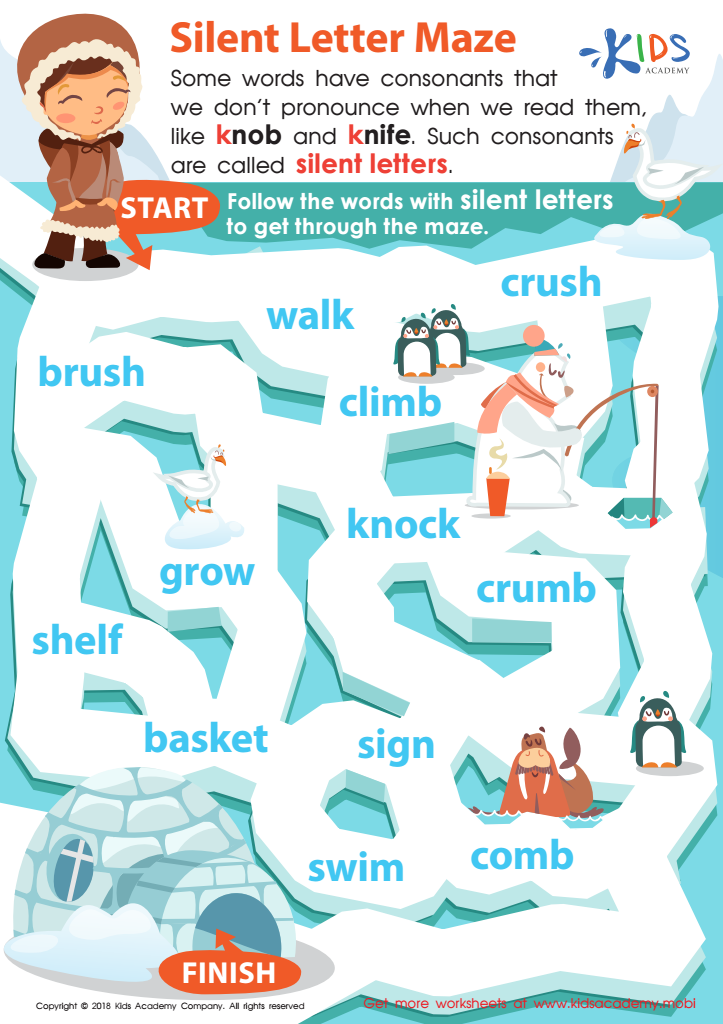Understanding silent letters Worksheets for Kids
2 filtered results
-
From - To


Is It Silent? Worksheet


Silent Letter Maze Worksheet
Question/Answer
How to test a Grade 1 student’s Understanding silent letters skills?
To test a Grade 1 student's understanding of silent letters, give them a simple list of words that include silent letters, such as "knee," "write," "know," and ask them to read the words aloud. Additionally, you can ask them to identify the silent letter in each word or choose words with silent letters from a given list.
Why is the Understanding silent letters skill important for Grade 1 students?
The understanding of silent letters is crucial for Grade 1 students as it significantly aids in improving their reading and spelling abilities. By recognizing silent letters, young learners can better decode and pronounce words accurately, which is foundational for developing strong literacy skills. This understanding also helps in building a more extensive vocabulary early on.
How to train the Understanding silent letters skill in Grade 1 students learning about Silent Vowels?
To train Grade 1 students in understanding silent vowels, start by introducing words with silent vowels in simple contexts, using visual aids like flashcards. Engage students in phonics games that emphasize the pronunciation and spelling of such words. Regularly practice reading and spelling exercises, highlighting and discussing the silent vowels to reinforce their recognition and understanding.
 Assign to the classroom
Assign to the classroom











